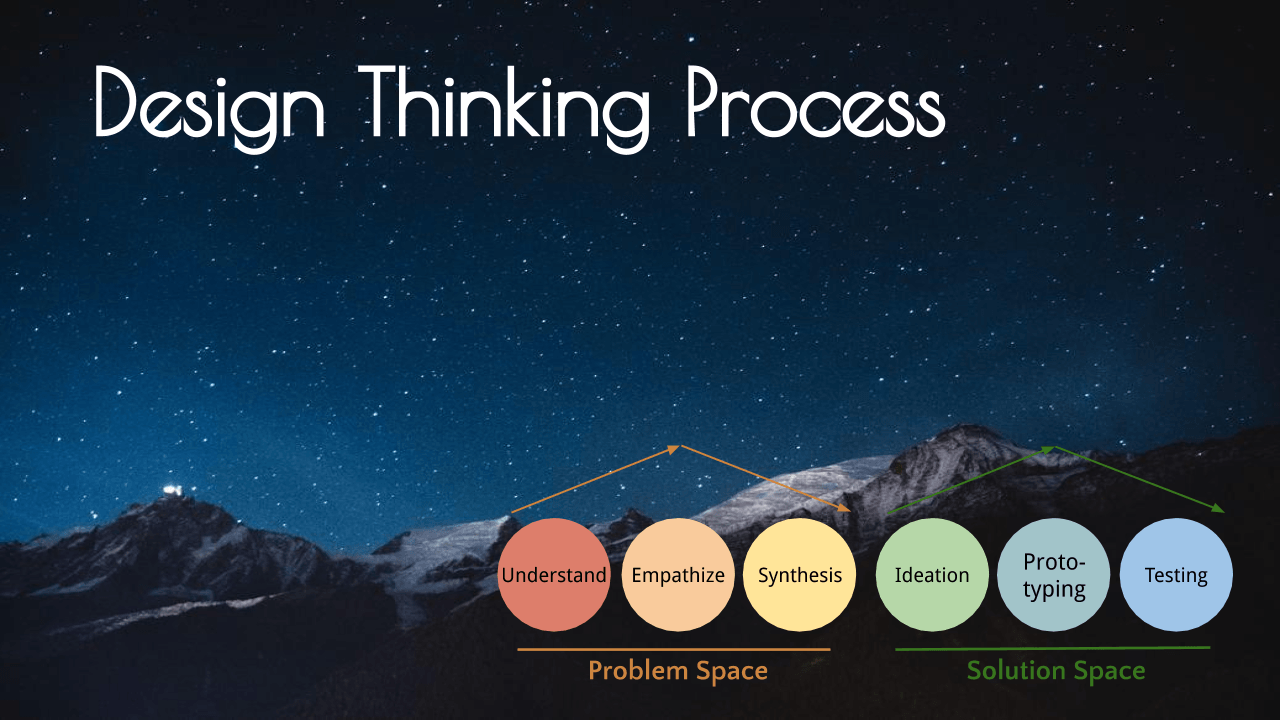Fourth stage: For most people, developing ideas is the heart of all creativity and also the core of the design thinking process (this is an overview of the design thinking process). For us, it is only the tip of the iceberg. Let’s have a closer look at the fourth phase of Design Thinking: Ideation.
Only when the underlying problem and the needs of the people are clearly understood, the most effective solutions come to life – quite by themselves. That’s why there is design thinking, and not just brainstorming. Creativity must be steered in the right direction, so that the really powerful ideas can be implemented into long-lasting solutions! This ideation stage will be followed by a cycle of prototyping, testing and improving.
There should be a question for every ideation method. It can be defined in the synthesis stage. Usually, the brainstorming question follows one of the patterns:
How can we…
- … meet the needs?
- … make the user happy?
- … solve the Problem?
- … design the ideal problem solution?
The three best ways for developing good ideas (without “brainstorming”):
- Bodystorming: Imagine that the solution already exists. Put yourself into the role of a relevant stakeholder: How do you interact with the solution? What do you think? How do you feel? What can you do with it, what not? Go forward with the information: What creates the solution? What must it look like to lead to the desired reaction?
- Headstand method: 1. Turn the question upside down: How can we make the problem much worse? What could sweep us from the market? How do we destroy the team spirit? 2. Gather answers to this question. 3. Cluster the answers. 4. Derive the positive principles of success!
- Walking: A relaxing walk through the park often helps much more than another hard-hitting meeting. When the body relaxes and the mind experiences no irritation by the rest of the group, it can freely imagine and create good solutions.
Where’s the brainstorming? Okay, for those who like to brainstorm: Here it comes …
The four best brainstorming techniques
- Silent brainstorming, where each participant quietly gathers ideas for 2 minutes without exchange. Very effective, as everyone really needs to think and have something to say.
- Hot Potato: Anyone who has „the hot potato“ has to call an idea, good or bad. Instead of a hot potato, you usually take a ball, or even better: Everyone forms a semicircle around the whiteboard / flipchart – whoever stands closest writes an idea, then rotate.
- 6-3-5: 6 participants write 3 ideas on a separate piece of paper and pass it on. The next person writes 3 ideas below. A total of 5 rounds.
- Tailwind: Everyone has a block of post-its in their hands and they all walk around the room. Ideas are noted and glued on the back of others. The other participants can build on these ideas and distribute other ideas on their backs. Best with music!
Attention: Threats during the brainstorming
In the traditional meetings you can rarely brainstorm well, because …
- … dominant characters determine the flow of ideas. That means less diverse ideas.
- … many people are shy to tell their thoughts out loud or they’re afraid of saying something wrong.
- … often there is no clear question formulated, that leads very different problems to be solved.
- … people are not in the right mood at all. There are no group dynamic exercises or there might be conflicts in the group.
Brainstorming rules:
Due to the dangers and the preservation of the Design Thinking Mindset the team agrees the following rules, usually at the beginning of the brainstorming:
- Ideas are not rated.
- Wild ideas are encouraged.
- „We’re going crazy now!“
- Build on the ideas of others.
- There are no bad ideas.
- Legibly write and visualize.
Also Interesting, regarding Design Thinking & Ideation:
